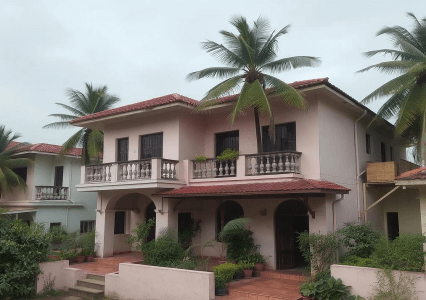
Purchasing a dream home involves meticulous planning as well as endless financial permutations & calculations. Financing the purchase is done either through own capital own by availing a home-loan through a bank or financial institution.
The competitive banking industry has been trying to lure home-buyers with attractive interest rates and flexible EMI options in the last two decades. Home-buyers are imparted with infinite options when it comes to availing a home loan.
Home-loan rates play a crucial role in influencing home-buying decisions in India. Here’s how they impact potential buyers:
- AFFORDABILITY OF HOMES: Lower interest rates reduce the overall cost of borrowing, making home loans more affordable and increasing buyers’ purchasing power. Conversely, high-interest rates raise monthly EMIs, discouraging potential buyers.
- Reduced home loan rates lead to people preponing their purchase decisions and in the process reduction in property prices due to surge in demand.
- LOAN ELIGIBILITY & APPROVAL: Banks assess home-loan eligibility based on the borrower’s income, credit score, and interest rates. When rates are low, borrowers can qualify for higher loan amounts, making it easier to afford expensive properties.
- Approval of a home -loan is subject to several criteria and documentation as laid-out by the lending institution.
- DEMAND IN THE REAL ESTATE MARKET: The demand-supply dynamics still rules the real estate market. Lower home-loan rates often lead to a surge in demand for real estate, driving up property prices. Higher rates, on the other hand, can slow down the market as fewer people can afford to buy homes.
- TYPE OF HOME LOAN PREFERRED: Home loans come in several types and formats. Buyers must choose between fixed-rate and floating-rate loans. When interest rates are low, floating rates may be preferred as they can decrease further. However, if rates are expected to rise, fixed-rate loans provide security against fluctuations.
- INVESTMENT VS. END-USE DECISIONS: Buyers also come in several types such as first-time buyers, holiday-home buyers or investment-buyers. First-time buyers are obviously consider price as a major concern and are looking for loans with lowest interest rates.
- Investors looking to buy homes for resale or rental income are heavily influenced by interest rates. Lower rates make real estate investments more attractive, whereas higher rates may push them toward other asset classes like fixed deposits or stocks.
- GOVERNMENT POLICIES & INCENTIVES: In the last few years, the Union Government has carried out reforms that have boosted the Realty Industry tremendously. The introduction of RERA has been a boon for property buyers.
- In addition, the Reserve Bank of India (RBI) often adjusts repo rates to control inflation, impacting home-loan rates. Government schemes like PMAY (Pradhan Mantri Awas Yojana) offer subsidies on interest rates, encouraging first-time buyers.
Conclusion: Home-loan rates have a direct and significant impact on property purchases in India. Lower interest rates make homeownership more affordable by reducing EMIs and increasing loan eligibility, thereby driving demand in the real estate market. Conversely, high-interest rates can deter buyers by making loans costlier and limiting purchasing power. Additionally, home-loan rates influence investment decisions, government policy effectiveness, and overall market trends.


